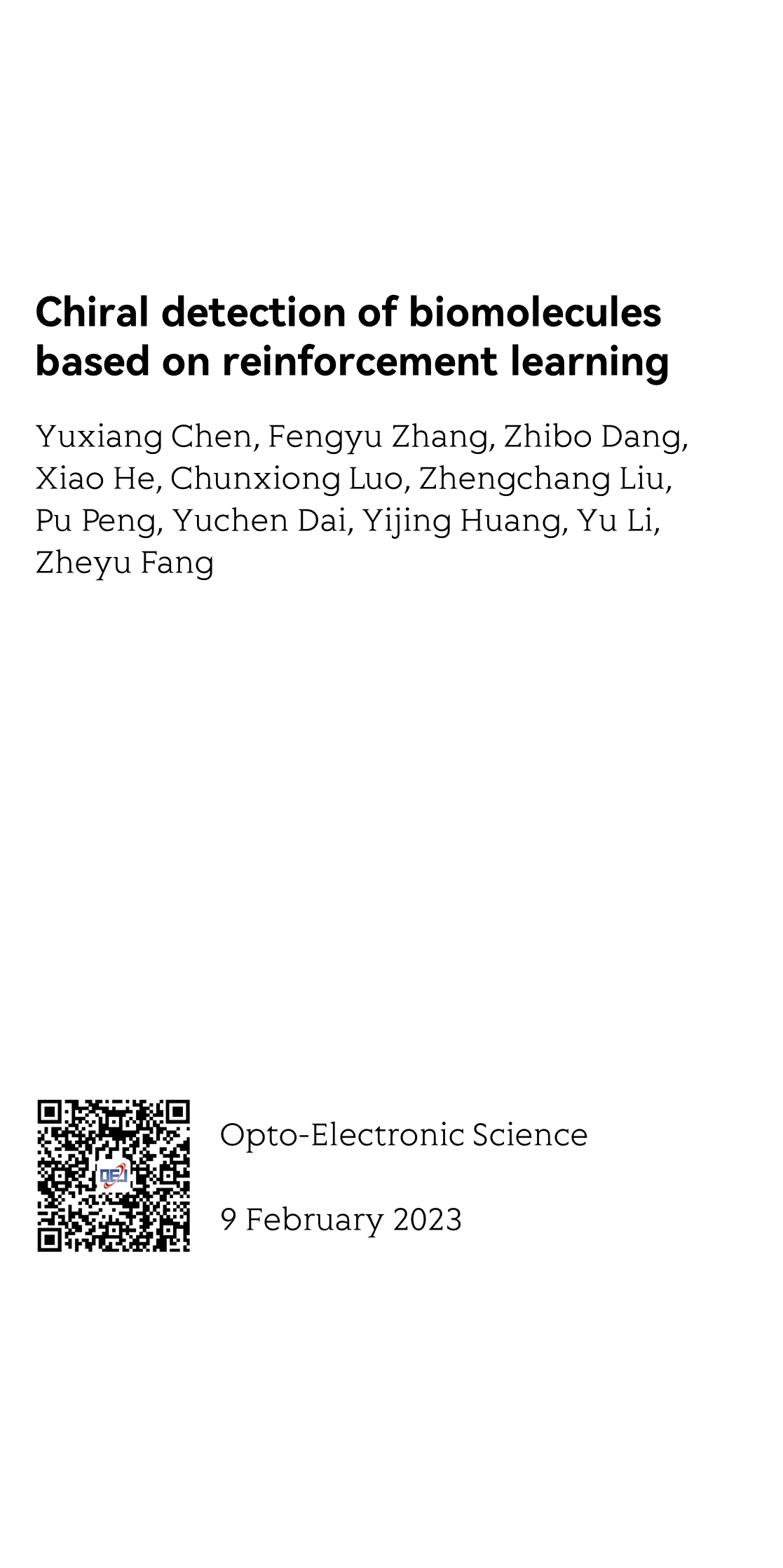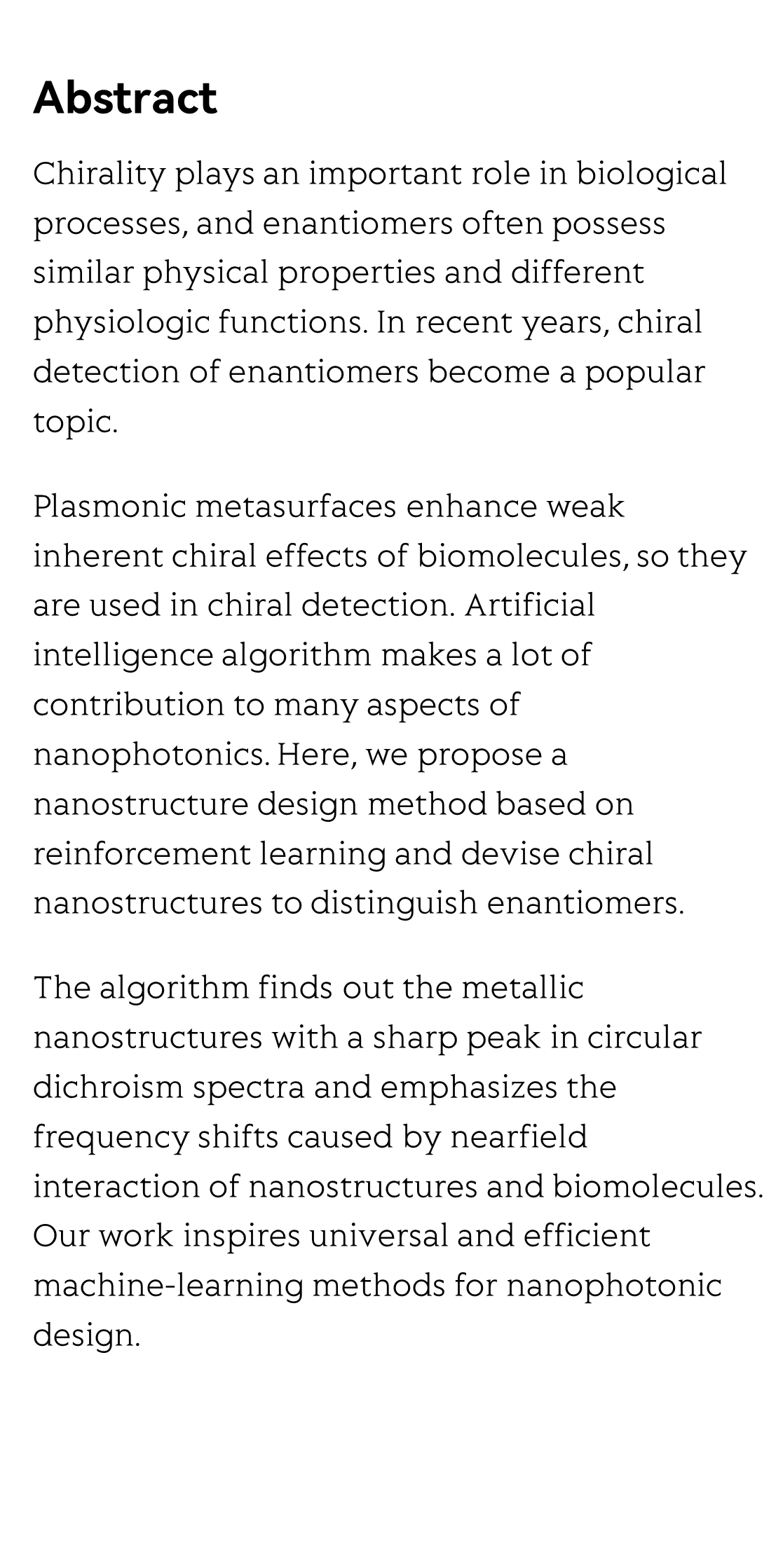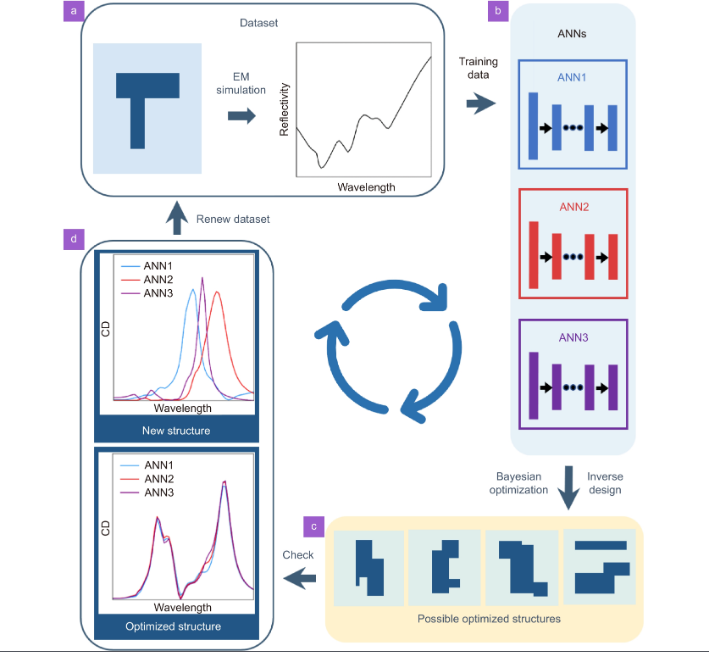(Peer-Reviewed) Chiral detection of biomolecules based on reinforcement learning
Yuxiang Chen 陈宇翔 ¹, Fengyu Zhang 张凤宇 ² ⁴, Zhibo Dang 党郅博 ¹, Xiao He 何霄 ¹, Chunxiong Luo 罗春雄 ² ⁴, Zhengchang Liu 刘正昌 ³, Pu Peng 彭璞 ¹, Yuchen Dai 戴宇琛 ³, Yijing Huang 黄逸婧 ¹, Yu Li 李瑜 ³, Zheyu Fang 方哲宇 ¹ ³
¹ School of Physics, Peking University, Beijing 100871, China
中国 北京 北京大学物理学院
² The State Key Laboratory for Artificial Microstructures and Mesoscopic Physics, School of Physics & Center for Quantitative Biology, Academy for Advanced Interdisciplinary Studies, Peking University, Beijing 100871, China
中国 北京 北京大学 前沿交叉学科研究院 定量生物学中心 物理学院 人工微结构和介观物理国家重点实验室
³ Academy for Advanced Interdisciplinary Studies, Peking University, Beijing 100871, China
中国 北京 北京大学 前沿交叉学科研究院
⁴ Wenzhou Institute, University of Chinese Academy of Sciences, Wenzhou 325001, China
中国 温州 中国科学院大学温州研究院
Opto-Electronic Science, 2023-02-09
Abstract
Chirality plays an important role in biological processes, and enantiomers often possess similar physical properties and different physiologic functions. In recent years, chiral detection of enantiomers become a popular topic.
Plasmonic metasurfaces enhance weak inherent chiral effects of biomolecules, so they are used in chiral detection. Artificial intelligence algorithm makes a lot of contribution to many aspects of nanophotonics. Here, we propose a nanostructure design method based on reinforcement learning and devise chiral nanostructures to distinguish enantiomers.
The algorithm finds out the metallic nanostructures with a sharp peak in circular dichroism spectra and emphasizes the frequency shifts caused by nearfield interaction of nanostructures and biomolecules. Our work inspires universal and efficient machine-learning methods for nanophotonic design.
Meta-lens digital image correlation
Zhou Zhao, Xiaoyuan Liu, Yu Ji, Yukun Zhang, Yong Chen, Zhendong Luo, Yuzhou Song, Zihan Geng, Takuo Tanaka, Fei Qi, Shengxian Shi, Mu Ku Chen
Opto-Electronic Advances
2025-07-29
Broadband ultrasound generator over fiber-optic tip for in vivo emotional stress modulation
Jiapu Li, Xinghua Liu, Zhuohua Xiao, Shengjiang Yang, Zhanfei Li, Xin Gui, Meng Shen, He Jiang, Xuelei Fu, Yiming Wang, Song Gong, Tuan Guo, Zhengying Li
Opto-Electronic Science
2025-07-25





